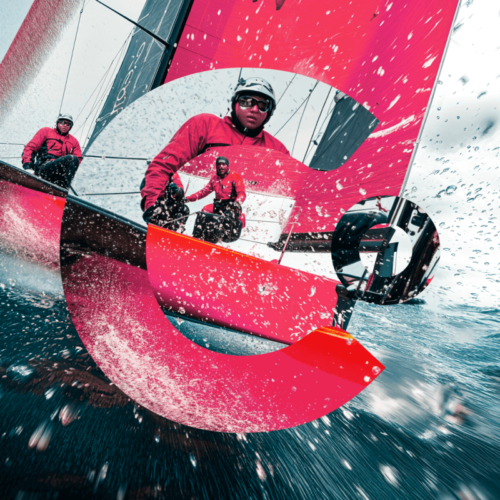User engagement is everything for B2B tech websites. From attracting new clients to building loyalty with current customers, engagement indicates how well your site and its design are serving user needs.
However, in an industry as fast-paced as yours, how do you know if your site is doing everything it can to connect with visitors? A few KPIs in your analytics toolbox point to engagement rates, but without the right context, you may struggle to transform those data points into actionable insights. If you knew how well a top-performing B2B tech website connected with users, you might better understand the areas of your site that most need improvement.
With that in mind, we reviewed the websites on our client roster to develop engagement benchmarks to inform your firm’s approach. Once you understand the right metrics to illustrate user engagement, you can direct your marketing budget toward improvements that are difference-makers for your users — and your business.
Identifying Benchmarks for User Engagement on B2B Websites
We analyzed the performance of 42 B2B websites across a range of technical specialties. Over the course of a year that encompassed more than 33 million sessions of user data, we looked at engagement performance reflected across a selection of KPIs in Google Analytics.
Benchmarking is a critical part of understanding website performance. In this report, we established standards for user engagement by averaging results in the following metrics:
-
Pages Per Session
The number of pages a user loads within a single visit.
-
Average Session Duration
The average amount of time a user spends on the site before leaving.
-
Bounce Rate
The percentage of all sessions on the site that resulted in a user viewing only a single page.
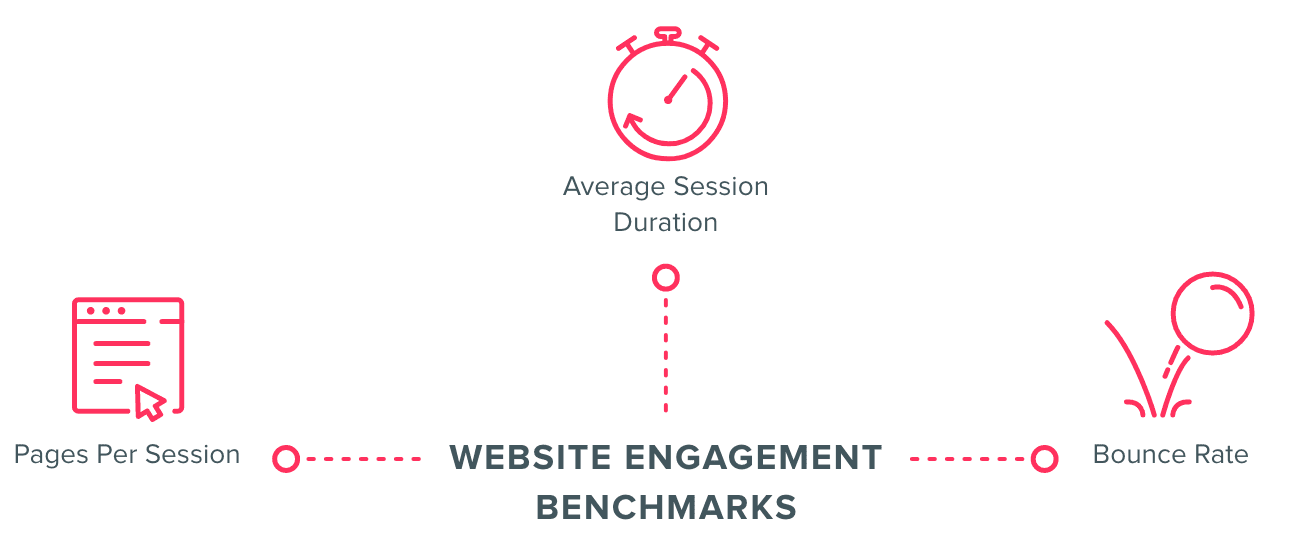
5 Key Insights to Improve User Engagement Metrics on B2B Websites
The content of your redesigned site is inevitably informed by the content your firm has in place. Below are a few questions you should be prepared to address. Even if you can’t find all the answers in the workshop, these topics provide food for thought about your content needs.
1. Content Drives Website Engagement
Over a year of user activity, the average page per session rate for the B2B websites in our study was 2 pages. A few firms were able to reach as high as 5, but these were the outliers.
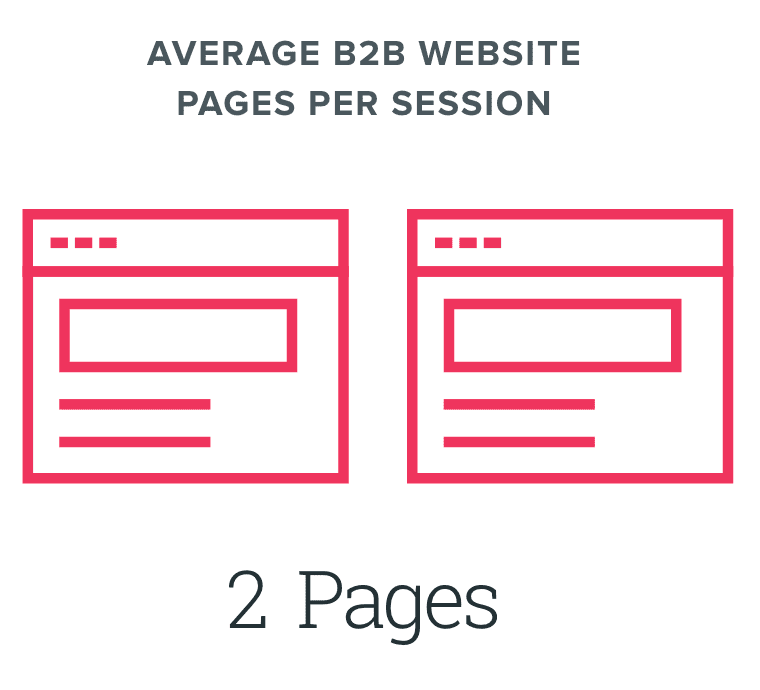
For most B2B firms, your homepage needs to drive traffic to products or solutions pages, which demonstrate what your firm does that stands apart from competitors. From there, your prospect ideally takes the next step and completes a contact form.
But your product’s technical specs won’t resonate with every audience. Engineers and end users may respond to data that showcases how well your offerings perform, but these details won’t be as compelling to the executive decision-makers you also need to convince. Your content needs to go beyond numbers to resonate on a deeper level.
2. Website Content That Connects with Emotions Boosts Engagement
Whether we’re talking about your home page, blog articles, or product pages, your website content needs to establish an emotional connection with visitors. Businesses often dedicate too much focus on their products while neglecting the reasons why your prospect should contact your firm as opposed to its competitors.
In the B2B world, creating a connection with your content is built on self-identification. Your users are coming to your site with a problem. From your website copy to its blog articles and downloadable assets, your content should underscore that you understand their issues and can provide a solution. Then, through case studies and examples of your work, you can build trust with users by demonstrating how your firm has helped companies just like theirs.
In the B2B world, creating a connection with your content is built on self-identification.
Ultimately, your firm’s content needs to resonate with people—not faceless B2B brand names. When your website appeals to the emotions behind what your products can do, your engagement numbers increase.
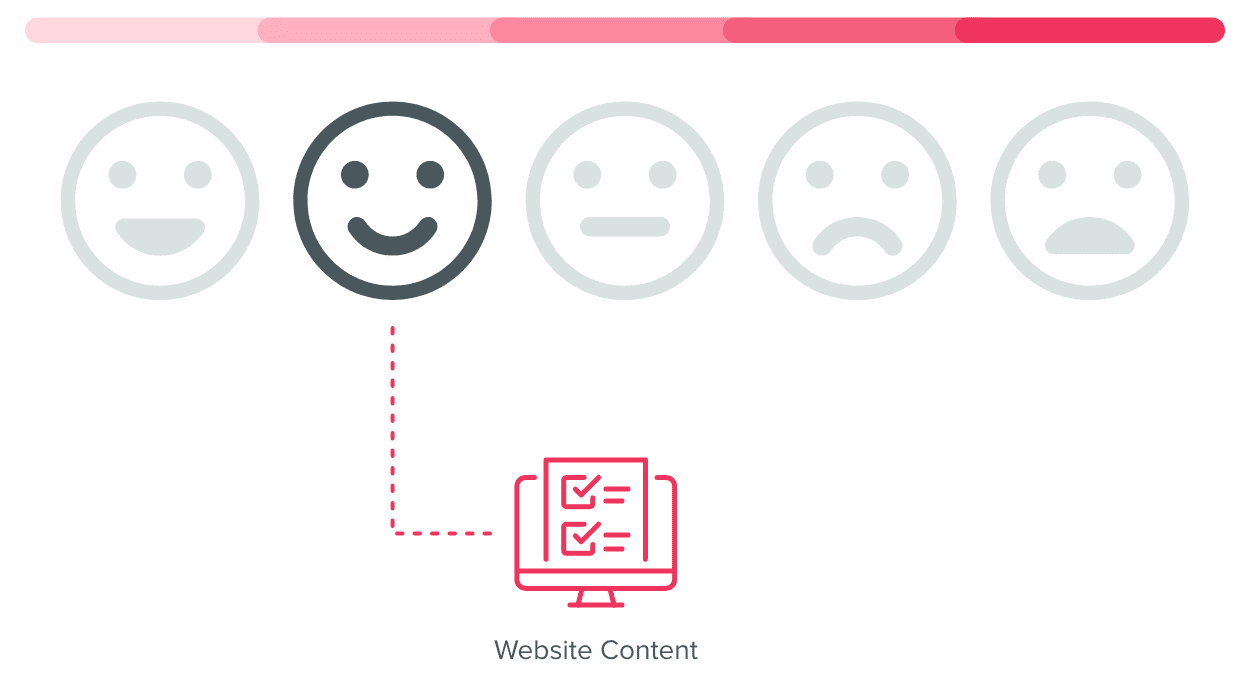
3. B2B Tech Customers Are Impatient Website Browsers
The average session length across the B2B tech websites in our study was roughly 2 minutes on a desktop browser. On mobile devices, that number dropped to about 1 minute.
When compared to the approximate 5 minutes needed to deliver a typical elevator pitch for your business, 2 minutes sounds painfully short. But in the context of how your customer experiences your site, it’s a lifetime. Your firm’s positioning should be easy to identify while your site provides scannable solutions for your prospect’s pain points.
As users scan your homepage, solutions pages, or about pages, they’re usually not trying to absorb every detail. They’re just looking for what they need. Your website content should capture their attention in a way that clearly illustrates where they should go next.
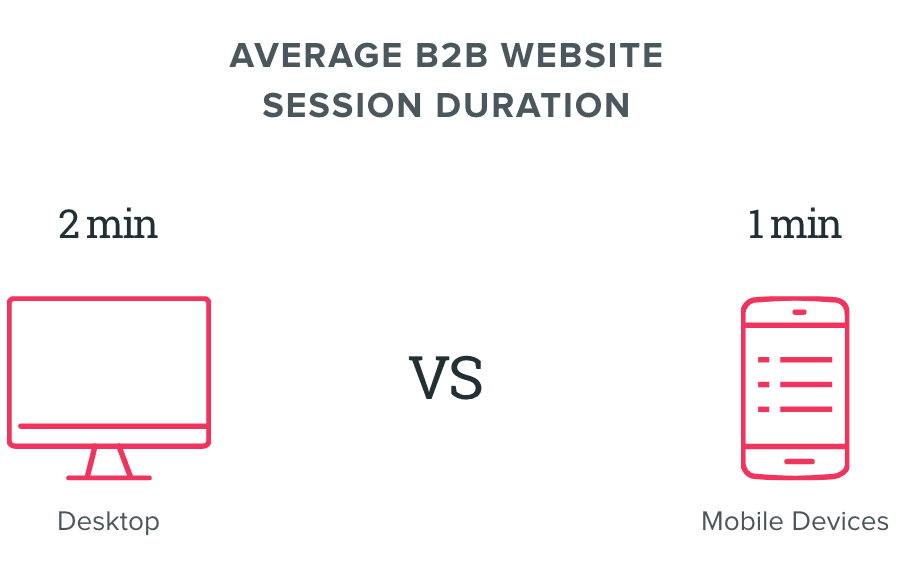
4. Intuitive Navigation Leads to Higher Engagement Rates
On average, the B2B websites in our analysis featured a bounce rate of about 60%. While metrics like exit and entry pages provide further detail about user habits, a higher bounce rate indicates users are not finding what they’re looking for when they come to your website.
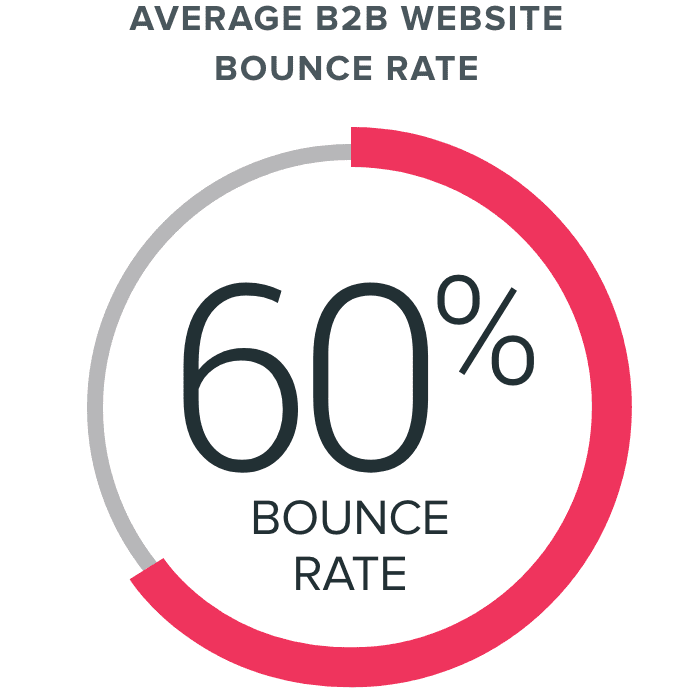
You also need to ensure your site clearly directs users to the most important information about your firm and its offerings. B2B firms that apply an effective UX strategy to incorporate a simple, intuitive navigation experience higher engagement rates because the site’s design anticipates user needs.
Clear navigation and a strong linking strategy that connects relevant content and features across your site encourages users to find more information about your firm. If your bounce rate is high, you should invest more of your marketing budget in clarifying your message and optimizing your UX design.
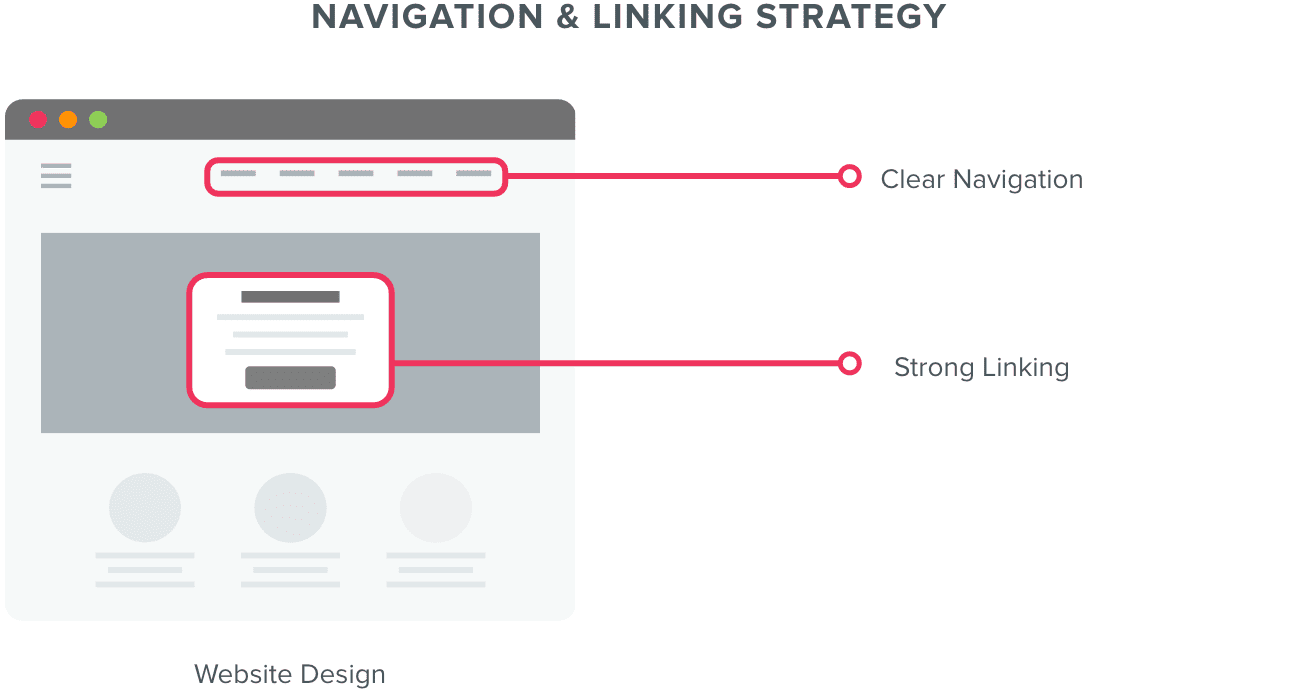
5. User Engagement and SEO Are Connected Priorities for B2B Firms
For all the value SEO delivers to your marketing efforts, keyword-rich content is no longer the only path toward prospects finding your site. As Google continues to place a premium on users having a positive experience, user engagement rates are increasingly valuable to your business and its rankings.
Websites rank higher in search when they are frequently updated, which provides another means of improving user engagement. Publishing new thought leadership articles and tweaking your user experience indicates to search engines and prospective customers that your site is dynamic and continually refreshed with new information.
Websites rank higher in search when they are frequently updated, which provides another means of improving user engagement.
High Engagement Pages Present Opportunities for Your Firm
As you identify the areas of your site that are attracting user interest, you can use those high-ranking pages to drive further engagement. “About” pages are typically among the most popular pages on B2B sites in terms of traffic and engagement rates. Parts of your site that resonate with users offer opportunities to guide them to the solutions pages and CTAs your business needs.
If your website is struggling to keep pace with the engagement benchmarks outlined here, you need to adjust your marketing strategy. Whether you need to optimize your content strategy, SEO efforts, or UX design, we should talk. Clear Digital has the experience to deliver sites that allow businesses to reach the level they need — and beyond.


